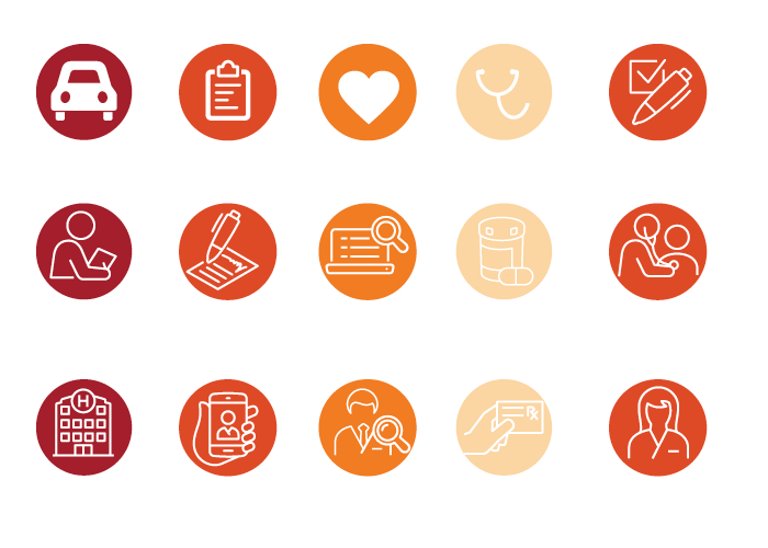RCE Quick Guide
Att 8a Quick Guide.docx
Red Carpet Entry (RCE) Program Implementation Project
RCE Quick Guide
OMB: 0920-1379
 Red
Carpet Entry (RCE) Quick Guide
Red
Carpet Entry (RCE) Quick Guide
Roles
RCE Concierge: Introduces the client to RCE and schedules the RCE Visit within 72 hours of initial contact, facilitates the client’s warm handoff to medical care and wraparound services, and reengages clients who miss their RCE Visit.
Counseling, Testing, & Referral (CTR) Counselor: Identifies eligible clients, refers clients to the RCE Concierge through warm handoffs, and reengages clients if the RCE Concierge cannot make contact.
Financial Counselor/Insurance Navigator: Discusses financial assistance programs and payment plan options to help clients pay for their HIV care.
HIV Navigator: Links the client to wraparound services.
HIV Specialist: Provides HIV primary care.

Key Terms
Warm Handoff: A warm handoff should be used every time a client is introduced to another staff member and includes the following:
Offering a caring greeting (such as a smile and handshake)
Exchanging names
Describing the staff member’s role at the clinic
Explaining how the staff member will assist the client and interact with them in the future.
RCE Visit: During a visit to the RCE clinic, the client receives the following services within 72 hours of referral:
Introduction to the RCE Concierge
Brief intake
Assessment for wraparound services
Financial assistance/benefits discussion
Introduction to their HIV Specialist
Laboratory tests
Visit wrap-up
RCE Outreach & Reengagement: A formal structure for outreach and engagement—initiated following a client’s loss of contact or missed RCE Visit:
The RCE Concierge makes two attempts to warmly engage the client, address barriers to care, and schedule or reschedule the RCE Visit.
If attempts are unsuccessful, the RCE Concierge contacts the referring CTR Counselor—except in cases of self-referral—to inform them of the client’s loss of contact/absence.
The CTR Counselor makes at least two attempts to warmly engage the client, address barriers to care, and schedule or reschedule the RCE Visit.

Client Journey Through RCE

 Step
1. Referral to RCE
Step
1. Referral to RCE
Role |
When |
What to Do |
CTR Counselor |
Following an HIV diagnosis |
|
|
||
RCE Concierge |
During established clinic hours for RCE clients |
|
Note: If the client contacts the RCE Concierge directly via self-referral, the client moves immediately to the next step in the client journey— the RCE Visit. |
 Step
2. RCE Visit
Step
2. RCE Visit
Role |
When |
What to Do |
|
RCE Concierge |
Within 72 hours of referral to RCE |
|
|
|
|||
|
|||
|
|||
|
|||
|
|||
HIV Specialist |
Within 72 hours of referral to RCE |
|
|
HIV Navigator* |
Within 72 hours of referral to RCE |
|
|
|
|||
|
|
||
At follow-up visit |
|
||
Financial Counselor/ Insurance Navigator* |
Within 72 hours of referral to RCE |
|
|
* This role could also be filled by the RCE Concierge, a case manager, or a social worker.
S tep
3. RCE Outreach & Reengagement
tep
3. RCE Outreach & Reengagement
Role |
When |
What to Do |
RCE Concierge |
If the RCE Concierge is unable to contact a referred client to schedule their RCE Visit or if the client misses their initial RCE Visit |
|
If contact is made: 2a. Determine the barriers that led to the client’s loss of contact or missed RCE Visit and how to best address these barriers, then attempt to schedule or reschedule their RCE Visit. |
||
If contact is unsuccessful: 2b. Inform the referring CTR Counselor—except in cases of self-referral—of the client’s loss of contact or missed visit and of the failed outreach attempts. |
||
CTR Counselor |
If the RCE Concierge is unable to contact a referred client |
|
|
||
If contact is made:
|
Note: If all contact attempts are unsuccessful, the client should be referred to the clinic’s standard of care outreach. |
| File Type | application/vnd.openxmlformats-officedocument.wordprocessingml.document |
| Author | Hedrick, Haley |
| File Modified | 0000-00-00 |
| File Created | 2022-03-30 |
© 2026 OMB.report | Privacy Policy